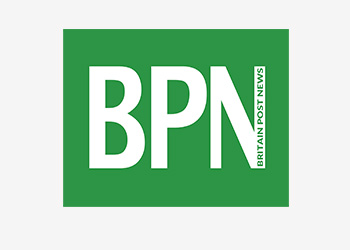Norways invisible glass ceiling

OSLO — When it comes to promoting womens careers, Norway is often held up as a model. The country has been described as one of the “most gender equal nations in the world.” And its state-mandated quotas of women on company boards have been put forward as an example for other countries to follow.
But if you look — as I have — at the percentage of women who reach the top of the career ladder, another picture emerges. By this standard, Norway is not much of an exemplar. It ranks just above Romania and Germany, and far behind countries like Russia, the United States, France and Latvia.
Call it Norways gender equality paradox. The true lessons from the country — and its Nordic neighbors — are that quotas are a poor method for promoting gender equality and that the heavy hand of government can unintentionally hold back womens career advancement.
By some measures, Nordic countries are indeed the most women-friendly places in the world. Since the age of the Vikings, Nordic societies have been unusually open to womens economic participation. Women in early Nordic societies could inherit land and property, kept control over their dowry and controlled a third of the property they shared with their spouses. They took care of the farms when their men were away on raids and sometimes even joined them as “shield maidens.”
The rise of the welfare state has been a double-edged sword for womens advancement.
Under medieval law, Nordic women had greater rights than in other parts of the contemporary world. Inheritance followed both male and female lines. Additionally, women could opt for a divorce — impressive for the time. This tradition was gradually built upon. Swedish women could run their own businesses generations before the same right was given to women in most parts of Europe.
Today, Nordic countries have a high labor market participation of women and one of the most gender equal attitudes in the world. It would be natural to conclude that many women also reach the top of the career ladder. But this is not the case.
I recently calculated the share of women who have managerial positions around the world. A clear pattern emerges.
The list is topped by Latvia — a neighbor of the Nordic countries that shares the same Protestant culture but has a small welfare state. In Latvia, 46 percent of managers are women. The United States — which is often criticized for lacking welfare state policies such as public provision for parental leave — follows in second place with 43 percent women managers.
The first Nordic country on the list is Iceland, with a limited welfare model and 40 percent women mangers. Sweden, which has scaled back its welfare model and opened up the public sector to private competition, has 36 percent women managers. Norway and Finland both do relatively poorly with 32 and 30 percent women managers.

When it comes to promoting womens careers, Norway shouldnt be seen as a model, but rather a warning | Christof Stache/AFP via Getty Images
Denmark, which has the highest taxes and the larges welfare state in the modern world, does even worse with only 28 percent of female managers.
The rise of the welfare state has been a double-edged sword for womens advancement. It has created jobs in women-dominated fields such as health care and education and helped women enter the labor market by offering daycare and other family-related services.
But high taxes have made it difficult for families in the Nordics to purchase services that alleviate household work. This has hampered womens ability to invest time in their careers.
Meanwhile, generous benefit systems combined with high taxes reduce the economic incentives for both parents to work full-time. Parental leave policies have given women incentive to take long breaks from the working life. Adding to this, state monopolies in women-dominated sectors such as health care and education have limited womens career choices.
Nordic policymakers are aware of these problems, and they have taken different approaches to addressing them. In Sweden, for instance, market reforms have in part been seen as a way of advancing womens careers.
Norway, instead, tried to tackle the problem with state-mandated policies. In 2003, the country passed a law requiring 40 percent of board members of public companies to be women. Sadly, these have not had the desired effect. A Belgian economist has shown that they had no measurable impact on ordinary womens career outcomes.
When it comes to promoting womens careers, Norway shouldnt be seen as a model. It should be seen as a warning — that the welfare state can be a drag on gender equality and that quotas are not the answer.
Nima Sanandaji is president of the European Centre for Entrepreneurship and Policy Reform and the author most recently of the study “The Nordic Glass Ceiling” for the Cato Institute.
[contf]
[contfnew]



